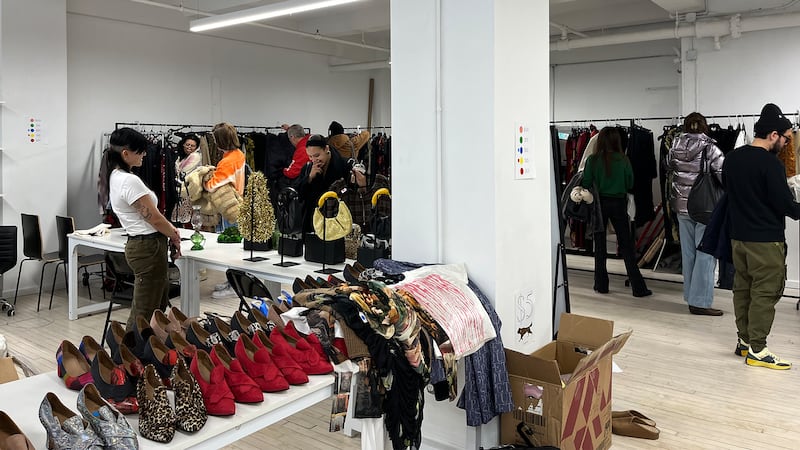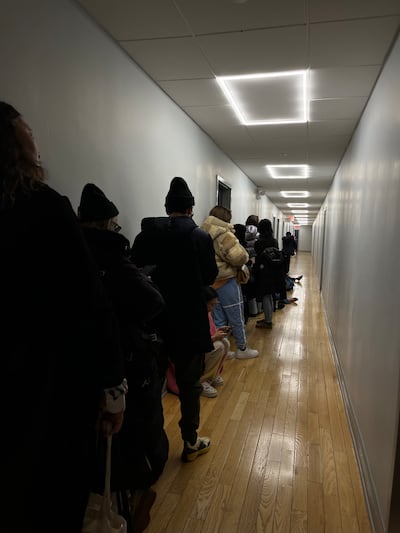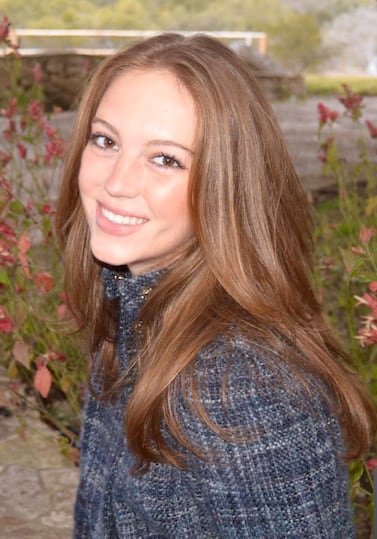The Business of Fashion
Agenda-setting intelligence, analysis and advice for the global fashion community.
Agenda-setting intelligence, analysis and advice for the global fashion community.

NEW YORK — “Sample sale? Floor four.”
The lone security guard repeated the mantra to a trickle of 20-and-30 somethings who had taken the train uptown to forage through what’s left of designer Carly Mark’s six-year-old cult fashion label Puppets and Puppets.
Citing mounting financial pressures, in early February Mark announced in The New York Times the brand was shuttering ready-to-wear and that she was moving to London to focus on her more successful accessories business, powered by the signature cookie bag. Puppets and Puppets Fall/Winter 2024 show earlier this month, not made to be put into production, was its last.
The abrupt end for an exciting new label fuelled renewed conversation about familiar fashion industry gripes: why it’s so hard to make it as a young designer; whether New York is capable of nurturing fresh talent or if there’s something wrong with the whole system. Most importantly, is the fashion business primarily fuelled by creativity or commercial — and how to prioritise what when?
ADVERTISEMENT
At her sample sale, Mark had her answer.

“The model is old. We make all these clothes and try to sell as much as possible; there are enough clothes in the world …. The bubble is bursting, that’s why brands are going out of business. We need to scale back in order to evolve,” she said. “It just isn’t working.”
After a tear-filled last show, some mourned the loss of a creative gem. In her review New York Times critic Vanessa Friedman said in the grand scheme of things Puppets and Puppets’ departure practically wouldn’t matter much: Mark’s clothes were never really that strong and fashion is teeming with ghosts of promising talent past, and newcomers clawing at the gates.
The fans who showed up on Thursday wouldn’t have put it that way, but the items they went for first spoke to Puppets and Puppets’ reputation as primarily an accessories brand.
The room was filled with pieces from the runway, cookie bags and other Puppets and Puppets paraphernalia: resin food, fabric, dog statues, cheese wedge shoes — never worn. With newly-dyed electric yellow hair strands peeking out from under a balaclava, Mark watched over the whole thing, giving out a few hugs and receiving well wishes.

The first shopper arrived at 8 am. When asked what she was looking to purchase: “bags.” It was a sentiment that echoed down the hallway-long queue that formed by 9:47, from influencers, fashion girls and “kind of” designers to a Chinatown-based artist who asked not to be named. She told her boss she was at a doctors’ appointment.
“It feels like all downtown designers have to fly the coop or get really commercial,” the artist said.
Ariel Friedlander, a Brooklyn-based artist opened her tote to reveal it was full of resin eggs and cake, as well as a pair of shoes. Puppets and Puppets inspired Friendlander to start making her own food-focused accessories, she said.
ADVERTISEMENT
Puppets and Puppets got its start as an experiential project when Mark was still working as a visual artist. Even as it racked up industry accolades like a CFDA emerging designer of the year nomination and a Fashion Trust US prize — the brand was embedded in the downtown art scene, emblematic of a micro-moment in New York.
Mark’s restructuring was prompted by a realisation no investors were coming to save her business.
“I have my handbags business and I’m not flushing all the money down the toilet to make ready-to-wear, I will not survive, and survival is everything to me,” said Mark. “I want to make it work.”
Ironically, sales on her site have never been better.
“It’s sad whenever camp leaves New York. We need more whimsy,” said influencer Griffin Maxwell Brooks.
Fashion Trust US, a non-profit organisation founded in 2022 to support emerging talent, awarded grants and mentorship to six brands as part of its inaugural ceremony.
To stabilise their businesses brands are honing in on what their particular consumer wants to buy, introducing new categories and starting conversations.
The brand, which harnessed the power of its bestselling Cookie bag and tastemaker customer base to become one of New York’s most promising emerging brands, wants to grow buzz at home and abroad.

Joan Kennedy is Editorial Associate at The Business of Fashion. She is based in New York and covers beauty and marketing.
To stabilise their businesses brands are honing in on what their particular consumer wants to buy, introducing new categories and starting conversations.
That’s the promise of Zellerfeld, a 3D-printing partner to Louis Vuitton and Moncler that’s becoming a platform for emerging designers to easily make and sell footwear of their own.
With a new heavyweight backer in Italian firm Style Capital — which helped Zimmermann secure a billion dollar valuation — the French contemporary womenswear brand has ambitions to go global. But it sits in a competitive and hard-to-crack category.
After a year that saw the investment coffers dry up in fashion and beauty, 2024 brings a renewed sense of hope — but only for brands that meet an exhaustive criteria.